Nothing is scarier in the mountains than a snowy avalanche in the winter. Avalanches are deadly and dangerous, and can cause damage to animals, people, and vegetation.
Learn how and why avalanches occur in this simple winter avalanche science experiment.
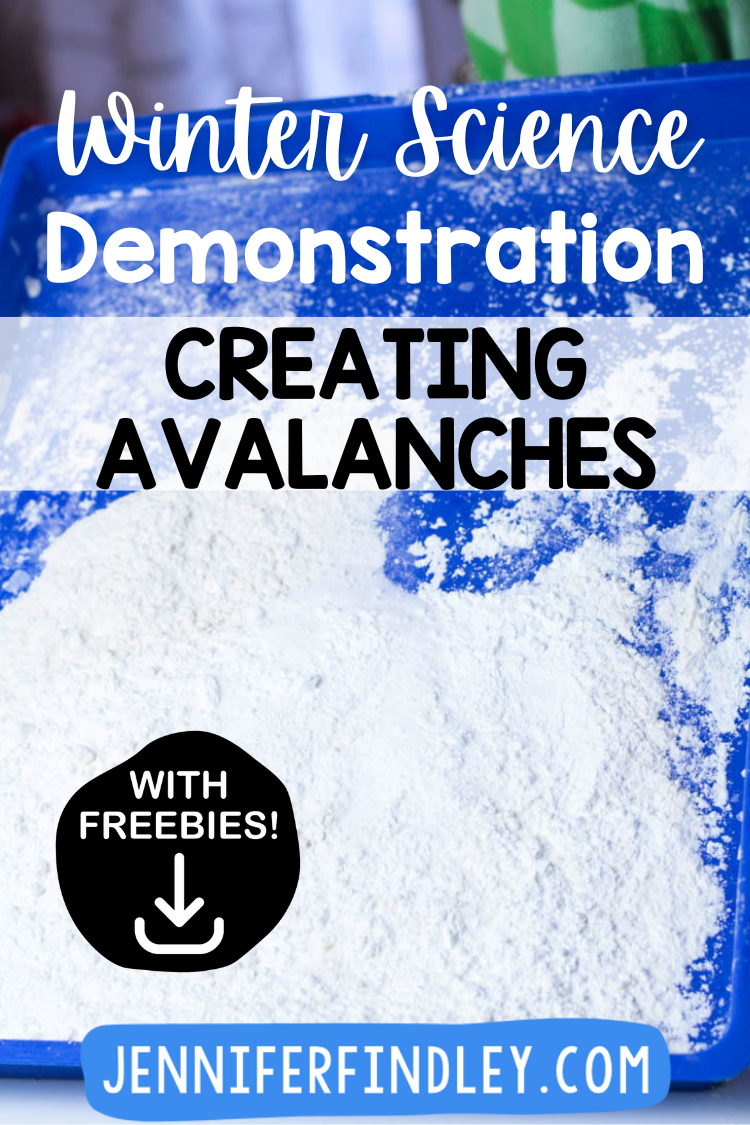
Want to see more winter activities and resources for other subject areas?
Winter Science Materials Needed:
- Flour
- Salt
- Sugar
- Cornmeal
- Fake snow
- Large plastic tray
- Compass
- Sound system
- Rocks or blocks
Winter Science Directions
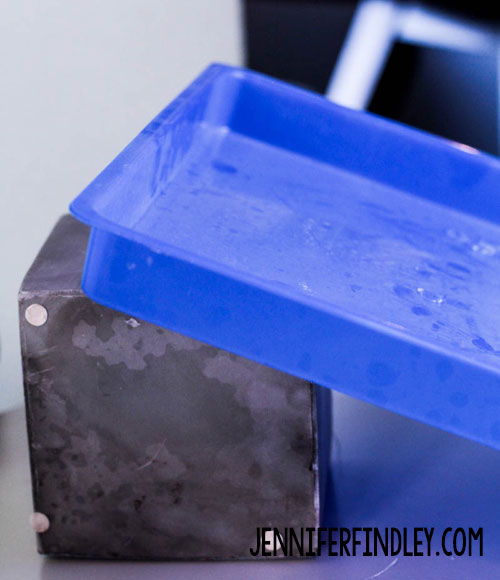


4. Adding more “snow” may also increase the chances of an avalanche.
The Science Behind the Winter Science Demonstration
It takes three things to cause an avalanche: snow, a sloped surface, and a trigger. When snow accumulates on an incline, it will eventually start to shift down the incline. Weak layers and rising temperatures can contribute to snow falling down the side of a mountain. Most avalanches occur on slopes that are between 25 to 60 degrees. This gives the snow enough time to build up into a heavy layer and cause significant damage if left untouched. Typical triggers for avalanches include wind, falling trees or rocks, a sudden change in the weather, and human activity.
After the Demonstration Reading Activity
I like to incorporate reading and writing into every science experiment, activity, or demonstration that we do and this is no exception.
For this activity, the students will read a short text that describes the science behind it (similar to what is explained above for the teacher reference). Then the students will use the details they learned in the text to explain what happened during the science experiment. They will also answer four comprehension questions using details from the text.
The questions your students will answer include:
- What three factors are necessary for an avalanche to occur?
- What natural events can trigger an avalanche?
- What human-caused events can trigger an avalanche?
- How do mountain resorts use explosions to control avalanches?
After reading the passage and answering the questions, you can invite your students to share their responses and have a classroom discussion about solutes, solvents, and solutions.
How Can I Get the Free Printable? Download it below!
Click here or on the image below to download the free reading activity and printables that accompany this winter science activity.
What are your favorite winter science activities or STEM activities? Let me know in the comments! I am always looking for new science experiments that my students will love.
If you want more resources and even freebies for winter, click here to check out my recommended winter activities, such as winter read-aloud activities to go along with The Story of Snow, a creating frost science experiment, a writing prompt about being trapped in a snow globe, a winter mad lib language activity, a build a snowman math activity, winter charades and more!.

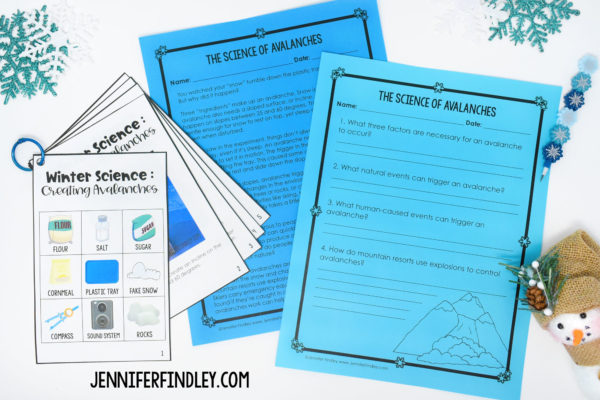
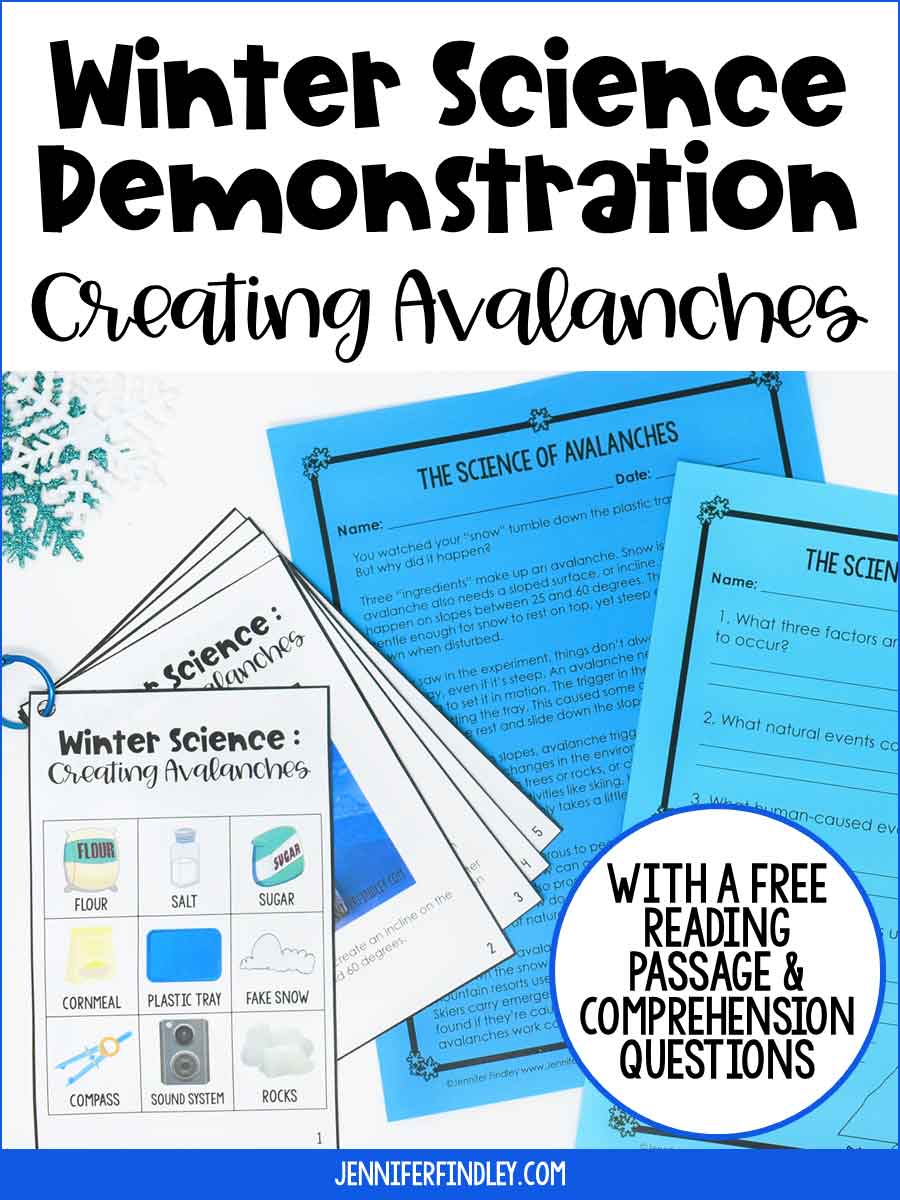
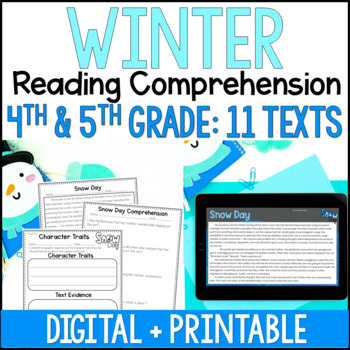
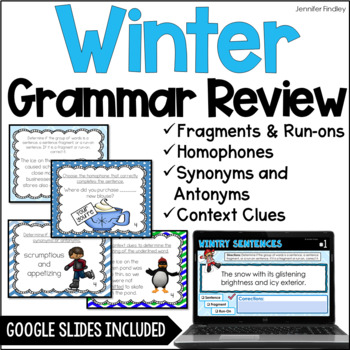
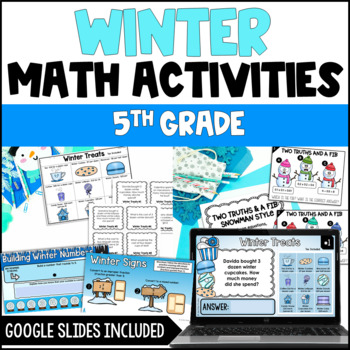






This is great; thank you!
What is the sound system for? I can’t find a spot in the directions where you mention using it.
I don’t see any directions for using several of the materials. Flour, sugar, cornmeal, sound system Am I missing something?